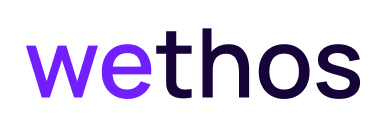Freelancer's Guide to Building Proposals: What to Include from Scope of Work to Contract Terms
As a freelancer, your ability to attract new clients often hinges on the strength of your proposals. A well-structured proposal not only showcases your professionalism but also sets clear expectations, ensuring that both you and the client understand the scope of work, payment terms, and project goals. Using Wethos’ Proposal Builder, you can build the perfect proposal using the key elements of an effective proposal: branding, project goals, scope of work, payment schedule, and contract specifications.
Incorporate Your Brand
Your proposal is an extension of your business identity. It's a touchpoint that should resonate with your brand. Branding helps to build trust, differentiates you from competitors, and reflects your professional approach. Here's how to infuse your brand into your proposal:
Logo and Color Scheme: Include your logo at the top of your proposal and use your brand’s color scheme throughout the document for consistency.
Professional Tone: Match the tone of your proposal with your brand's voice—whether it's formal, conversational, or creative.
Defining Project Goals
Articulate the client's vision by including well-defined project goals. This section should resonate with the client's needs and demonstrate a clear understanding of their objectives.
Align With Client's Objectives: Outline how your services will help achieve their goals. Be specific.
Measurable Outcomes: State what success looks like with measurable outcomes, ensuring that both parties have the same definition of project completion.
Scope of Work
One of the most critical components of your proposal is the scope of work, which outlines exactly what services you'll provide. A clear scope of work prevents scope creep and ensures you're compensated for all your efforts.
Detailed Deliverables: List what you will deliver, including any tangible products or reports.
Timeline: Provide an estimated timeline for each phase of the project, from inception to completion.
Price: Clearly state the price of the services or phases within the work so you always get paid for the work that’s done.
Payment Schedule
A transparent payment schedule safeguards your revenue stream and helps manage client expectations. It's important to outline when and how you expect to be paid.
Pricing Model: Explain your pricing model—whether it's hourly, per project, or a monthly retainer.
Payment Milestones: Set payment milestones aligned with project deliverables or a specific timeline.
Scheduled Invoices: Ensure the proposal is accepted so invoices are automatically sent out on dates agreed upon.
Contract Terms
Lastly, a well-crafted contract establishes the foundation of a solid working relationship and protects both parties legally.
Duration: Specify the start and end dates of the agreement, along with any conditions for extension.
Termination Clause: Clearly state the terms under which either party can terminate the agreement.
Intellectual Property: Define who owns the work product at various stages of the project.
Confidentiality & Non-Disclosure: Include clauses that protect sensitive information shared between you and the client.
Remember, each proposal should be customized to reflect the specific needs and nuances of the potential client and the project at hand. By structuring a proposal that encompasses your unique brand, delineates project goals, details the scope of work, clarifies payment schedules, and outlines contract terms, you position yourself as a consummate professional—greatly increasing your chances of winning the project.
By following this comprehensive guide, freelancers can deliver proposals that not only impress potential clients but also lay the groundwork for successful, long-term collaborations. So, invest time in honing your proposal game; it could be the deciding factor in your next big opportunity.





